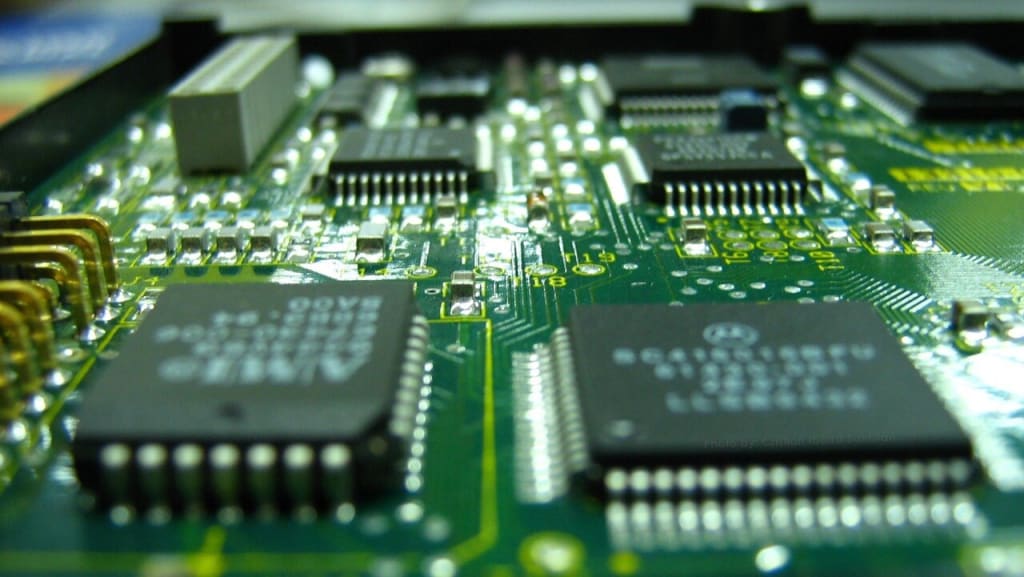Content warning
This story may contain sensitive material or discuss topics that some readers may find distressing. Reader discretion is advised. The views and opinions expressed in this story are those of the author and do not necessarily reflect the official policy or position of Vocal.
South Korea Printed Electronics Market: South Korea's Pivotal Role in Propelling the Global Printed Electronics Market Forward
South Korea Printed Electronics Market

Origins of South Korea Printed Electronics Market
Printed electronics originated in South Korea in the early 2000s as researchers looked for new applications of printing technologies. Some of the earliest work involved printing thin-film transistors and organic light-emitting diodes. The Korean government recognized the potential of this emerging field and began funding research programs through agencies like the Ministry of Science, ICT and Future Planning. Several startups were also formed around this time to commercialize printed electronic technologies.
By the mid-2000s, the focus shifted to developing fabrication processes that could enable mass production of printed circuits, displays and sensors. Researchers made significant advancements in inkjet- and roll-to-roll printing methods using both organic and inorganic materials. This attracted more investment from both public and private entities. Several large conglomerates like Samsung and LG also entered the field to leverage their display manufacturing infrastructure. International collaborations grew as well through partnerships with academic labs in the US, Europe and elsewhere.
Mass Production Capabilities
South Korea is now a global leader in Printed Electronics mass production capabilities. Samsung, for instance, has several commercialized products incorporating printed technologies like OLED display bonding and touch sensor integration using printing techniques. Their newest flagship smartphones and tablets heavily utilize printed functional layers. Other manufacturers have followed suit, allowing South Korea to capture a major share of the global flexible and printed electronics market.
Much of this success comes down to the country's investment in industrial-scale roll-to-roll/web processing infrastructure over the past 15 years. Organizations like the Electronics and Telecommunications Research Institute play a key role in demonstrating high-volume, continuous printing technologies. Their pilot and mass manufacturing lines are regularly used by both startups and large companies for technology validation and scaled-up production. This investment has enabled Korean firms to overcome many technical hurdles in areas like registration, uniformity and defect control at commercial production levels.
Material and Process Innovation
While the focus was initially on improving printing processes, more recent advancements have centered around new functional materials. South Korean material scientists have developed novel inks for applications in biosensors, memory devices and energy harvesting. These inks leverage organic semiconductors, carbon nanotubes, graphene and other nanomaterials. Continuous optimization of ink rheology, compatibility with printing methods and long-term stability under device operation is a major area of government-funded research.
Significant innovations have also emerged in customized printing processes suited for various flexible and printed products. Digital additive manufacturing approaches like aerosol jet printing enable high-resolution patterning of multi-layered microcircuits. Laser-based curing allows the use of temperature-sensitive substrates. Novel hybrid methods integrate printing with spin coating, doctor blading or evaporation steps. All these tailored manufacturing techniques support Korea's growing expertise in multifunctional, personalized printed systems.
Applied Research Strengths
One reason for Korea's applied research prowess in printed electronics stems from strong ties between academia and industry. Research programs are closely aligned with commercialization needs through partnerships between universities, public labs and companies. This facilitates faster translation of basic studies into product-ready technologies. It also drives the development of applications beyond simple proof-of-concept demonstrations.
Key research thrusts include printed healthcare diagnostics, wearable fitness monitors, electronic skins, Internet of Things sensor nodes and smart packaging. Demonstrator systems leverage commodity printing but aim for real-world form factors, functionality and reliability evaluations. There is growing work on integrating multiple printed components like thin-film batteries, solar cells and memory elements into fully functional modules. Such application-driven prototyping helps South Korean firms cement their leadership in commercially viable printed systems.
In summary, over the past two decades South Korea printed electronics market has emerged as the clear frontrunner in printed electronics through targeted investments spanning R&D, infrastructure and industry partnerships. While global competition intensifies, the country remains committed to this area through initiatives like the Graphene Valley project. Strengthening capabilities in advanced functional materials, multi-material integration and hybrid digital manufacturing will ensure continued technology leadership. An application-led outlook also positions Korean firms well to capture major market opportunities as printed systems get deployed across various new industries in the coming years. With its proven ecosystem support, South Korea is poised to drive innovation and commercialization of printed electronics well into the future.
Get more insights on this topic: https://manage.wix.com/dashboard/c4ce5910-f290-4bad-9e93-c07ea06fa726/blog/68783ce9-209f-4556-b58e-788b40044a92/edit?tab=published&lang=en
About the Creator
Enjoyed the story? Support the Creator.
Subscribe for free to receive all their stories in your feed. You could also pledge your support or give them a one-off tip, letting them know you appreciate their work.





Comments
There are no comments for this story
Be the first to respond and start the conversation.